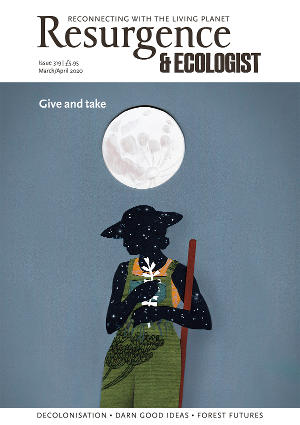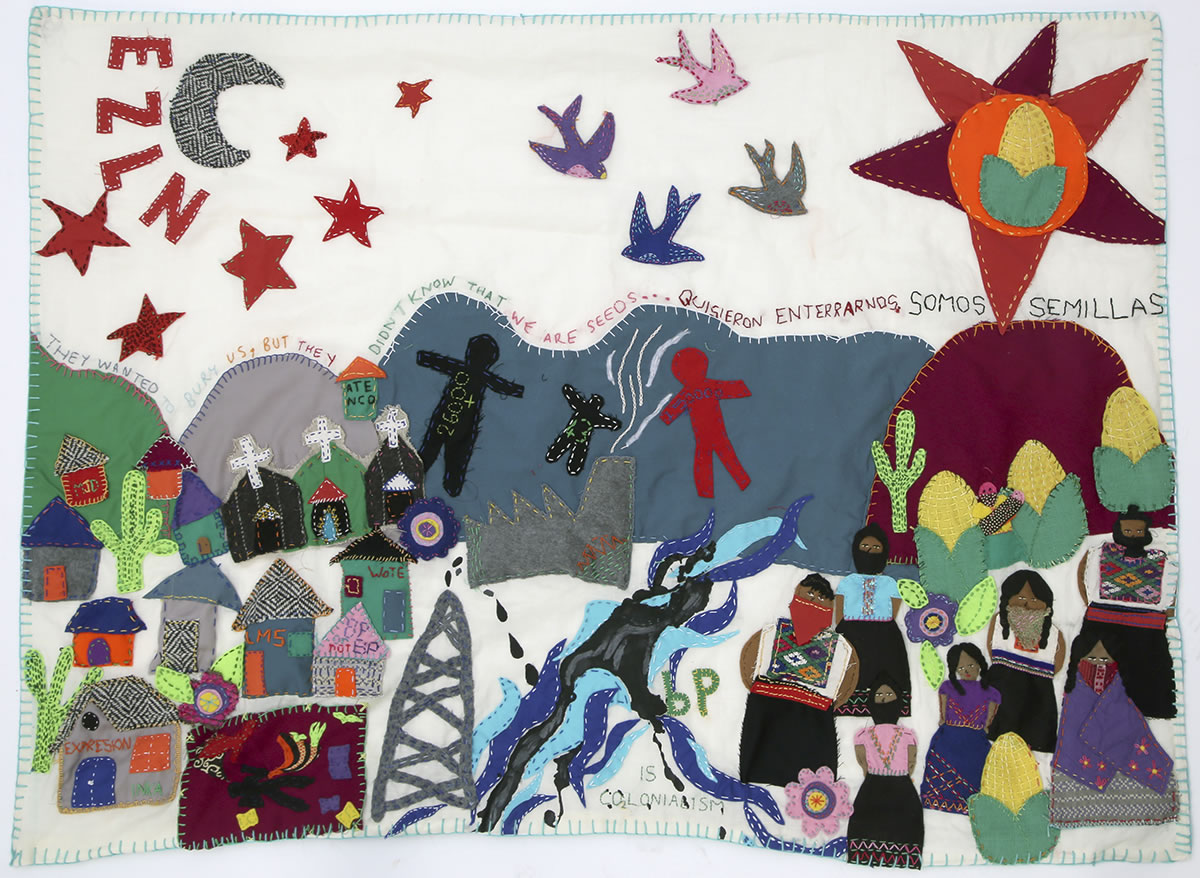In 2014, a man was arrested carrying a shield with a BP logo on it in a queue outside the British Museum. He was on his way to take part in a ‘Viking funeral’ for the oil giant, which was sponsoring an exhibition at the museum. The protest involved assembling a giant longship inside the building. “The hilarious thing was that his name was Thor,” Jess Worth, co-founder of activist group BP or not BP, told Resurgence & Ecologist. “So we immediately put out a press release saying, ‘Thor arrested at British Museum Viking protest’.”
That was the first and last arrest for the group, who formed in 2012 to stop BP sponsorship of the Royal Shakespeare Company (RSC) – hence the name – through creative tactics such as stage invasions. The RSC ditched BP last year. “They [the RSC] ended it for the right reasons,” Worth said. “They said they realised BP was becoming a barrier between them and young people. It’s really a testament to the power of the youth strike movement over the last year, I think.”
BP has been portrayed as Shakespeare villains, smarmy PR representatives, Vikings and pirates, with humour employed as a powerful tool “to cut through the PR spin”, as long as the jokes are not disrespectful or flippant, Worth says. Last year, visitors to an exhibition of Assyrian artefacts were met by activists dressed as BP executives (‘Vice Chair for Drilling and Spilling’ and ‘Vice Chair of Oil and Evil’), and spoof banners, one of which read: “BP is delighted to be sponsoring objects from ancient Iraq. Like Ashurbanipal, we’re willing to do whatever it takes to keep control of the region’s wealth and resources”.
The ‘actor-vists’ have increasingly linked up with campaigners who want to return treasures stolen during colonial invasions. In May 2019, hundreds of people joined an Indigenous-led tour of the museum, with talks from Palestinian, Iraqi, Greek and Indigenous Australian activists urging it to repatriate objects acquired through colonialism. The tour was led by Rodney Kelly, a campaigner who is calling for the return of his ancestor’s shield, which was taken by James Cook and his men on their first arrival in Australia in 1770.
So, how hopeful are they that these tactics are working? “The board are very corporate, there’s a lot of CEOs and investment people, it’s 100% the establishment, so trying to persuade that group of people to walk away from BP as a sponsor is a huge challenge,” Worth says. “I believe we’ll win in the end and I’d really love us to win soon because it still upsets me every time I go into the museum and see BP logos all over art and history. It’s really offensive and inappropriate.”
As this magazine goes to print, the group are planning to stage the ‘Fall of BP’ via a huge crowdfunded Trojan horse to mark the exhibition Troy: Myth and Reality, sponsored by BP. They intend to smuggle the structure into the museum, much like the Viking longship. Worth expects it to be “the biggest action so far”, with around 700 people signing up to take part. So, how will they do it? “I can’t say too much,” she says, “but it’s going to be epic.”







